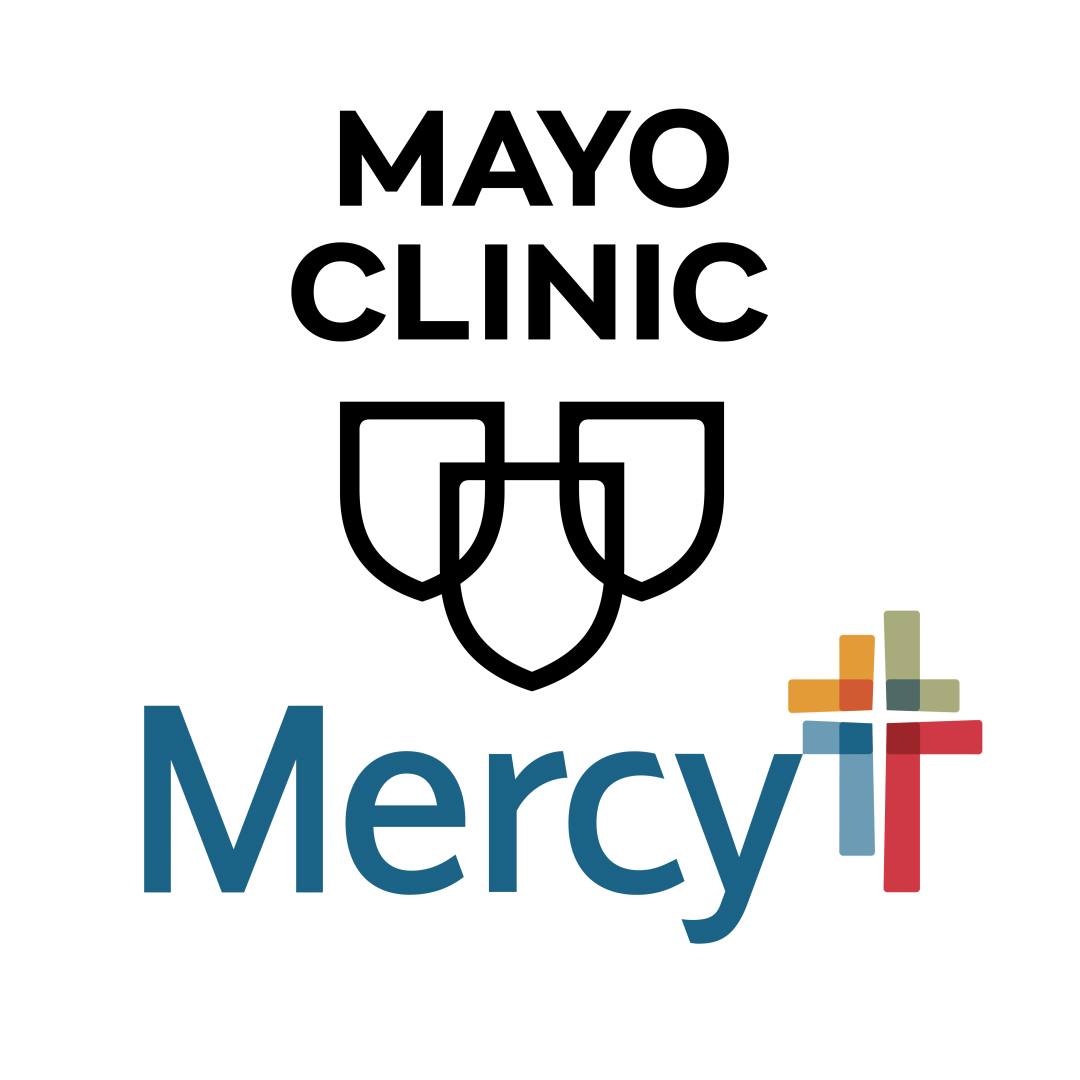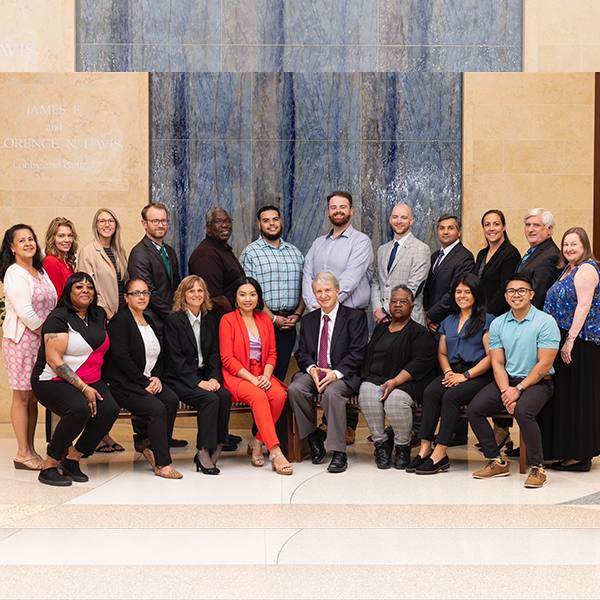-
Research
Science Saturday: Mimicking cancer, one model at a time
One April, Mayo Clinic oncologist Gerardo Colon-Otero, M.D., found himself the bearer of good and bad news. The good news was that he had discovered the cause of his patient's severe stomach aches. The bad news was that the culprit was a tumor the size of a tennis ball, lodged in the patient's pancreas. To make matters worse, the tumor was a form of pancreatic cancer that affected fewer than 50 people in the U.S. every year. With scant data to tell him how to treat the patient, Dr. Colon-Otero decided to generate these data himself.
He teamed up with colleague John Copland, Ph.D., a basic scientist who was in the midst of developing laboratory models that could mimic patient tumors. Dr. Copland took the patient's tumor cells and grew them in sterile culture dishes before dosing them with different cancer drugs targeted at the cells' molecular makeup. After one drug, doxorubicin, proved particularly adept at killing off the cancer cells, Dr. Colon-Otero gave it to the patient. Unlike most patients who succumb to the rare cancer in a matter of months, he survived for eight years.
"A decade ago, I would have not told you we can cure cancer, but I truly believe that we can now," says Dr. Copland. "We have the tools to finally do it."

A Promise Kept
Mayo Clinic researchers do not use the word "cure" lightly. But many of them are feeling particularly optimistic — and empowered — with the advent of new tools like genomic technology, computing power, and now, a growing stable of laboratory models that include cell lines, 3-D tissue cultures called organoids and personalized mouse models. Over a dozen researchers across Mayo Clinic are using these new models to tease apart the origins of disease and hand-pick the treatments that will be most effective for their patients.
The idea of personalized or precision medicine became a subject of fervent interest, and perhaps unrealistic hype, with the completion of the Human Genome Project. Scientists suddenly had more information about human health and disease at their fingertips than ever before, and cures seemed imminent. However, the last 15 years have been slow going, in part because the syntax of the human genome, how it is structured and the processes involved in “reading” it, is more complicated than scientists once thought, and genomics only tells part of the story of why people get sick and how they will respond to treatment.

"The promise of the Human Genome Project hasn't been realized yet," says Panagiotis Anastasiadis, Ph.D., a cancer biologist. "The reality is we know some of the cancer drivers, but we don't know them all. For example, we know that Her2 amplification can drive the growth of breast cancer. So women who are Her2-positive are treated with Her2-targeted therapy. But do you know only 70% of them respond? Why are the other 30% not responding? Other genes must be taking over. The genomics itself doesn't prove that the drug will work or not."
The only way to definitively prove that a drug will work against a particular tumor is by treating the tumor itself, which is not an attractive option for patients who often only have months to live and there are hundreds of drugs to try. Instead, researchers are developing models that enable them to grow tumor cells outside the patient, or "ex vivo." They then use these miniaturize versions of patient tumors to screen a handful or even thousands of drug candidates. Whatever works best in the laboratory — a single drug or perhaps a new combination of drugs — is the best shot for the patient.
Cancer Facsimiles
For Drs. Colon-Otero and Copland, their model of choice entails millions of cells, isolated from patient tumor tissue, all growing in a relatively orderly fashion on the two-dimensional surface of culture plates. Dr. Anastasiadis prefers to fashion his models in three dimensions, generating tiny balls of 500 to 5,000 cells representing all the different types — cancer, immune, stromal and vasculature cells — present in the original tumor. Dr. Anastasiadis calls these models "microcancers." Related, though not identical models, go by the names "spheroids" or "organoids."

So far, he has made microcancers from 16 tumor types. Together with his colleagues at the Mayo Clinic Center for Individualized Medicine, Dr. Anastasiadis launched Project Ex Vivo in January 2018. This project is a clinical trial funded by the center and a Mayo grant focuses on projects that could potentially transform the practice. The trial will create microcancers for 75 patients with aggressive brain, lung and endometrial tumors that nobody knows how to treat.
"The whole point of this trial is to prove that even in the most difficult of cases, we can predict what drives each tumor and pick the best way to treat it," he says. "We think that it will minimize exposure to drugs that are either ineffective or harmful to the patient. Our goal is for every patient who comes to Mayo to have access to this predictive tool, in addition to clinical and genomic tests."
The team already has had one success in a patient with triple-negative breast cancer, a form of the disease that is aggressive and difficult to treat. They were surprised to find that the patient's microcancers did not respond to any of the drugs that the standard clinical and genomic tests predicted would work. When they looked deeper, they discovered the microcancers carried a new genetic mutation. When they selected drugs that targeted this new gene mutation and its associated pathway each of them had a strong effect on the microcancer. When they switched the patient to one of those drugs, the tumors, which had spread throughout her body, disappeared.
Martin Fernandez-Zapico, M.D., a Mayo pancreatic cancer biologist who uses organoids to develop new therapies for pancreatic cancer, believes that organoids occupy a sweet spot between the two-dimensional cultures, which can bear little resemblance to a patient's tumor, and animal models, which can be costly and time-consuming to make. "Organoids carry the same molecular features and similar biological traits as the patient tumors, and they predict very well the response to therapy, within few weeks after diagnosis," he says. "This approach allows us to compare in real time the treatment of the patient and the treatment of the organoid."

Dr. Fernandez-Zapico and his colleagues in the Mayo Clinic Cancer Center have assembled Project HOPE (Human Organoids for Pancreatic Cancer Eradication) to develop a library of pancreatic human tumors from biopsies and surgical resections taken from the patient. Scientists can tap these patient-derived organoids to develop new biomarkers and test new precision therapies for the devastating disease, which is predicted to be the second leading cause of death in the U.S. by 2030.
Ambitious Avatars
Oncologists and biologists alike often are surprised by the mercurial nature of cancer, which takes on mutations such as new identities as it adapts to its changing environment, responding favorably to a treatment one day and then acquiring resistance the next. As a result, researchers are trying to develop models that more closely mirror what is happening in an actual patient. "The idea,” said Dr. Anastasiadis “is to stay a step ahead of the cancer instead of two steps behind.”
About a decade ago, a new model burst onto the scene that appeared to represent that step forward. The model, called a "patient-derived xenograft" or PDX, was generated by grafting a human tumor into a mouse host, where it could grow and spread as if it were still in the patient's own body. Before long, people were envisioning armies of these cancer-ridden patient-derived xenografts or avatars, as they also were called, deployed to provide actionable intelligence on how to treat each cancer patient. Yet again, the science was not able to keep pace with the hype.
"There was so much excitement that these mice could be used to test treatments and that this information would then be translated back to manage the care of patients in real time," says Matthew Goetz, M.D., a Mayo breast cancer oncologist. "But that didn't really pan out because it takes too long to get these models established in many cases."
It can take up to a year to generate avatars for a single patient, and depending on the cancer type, attempts to make avatars can fail more often than they succeed. Compare that to organoids, which only take 10 days from biopsy to result. Plus, tumors implanted in mice sometimes take off in a direction that depends on the mouse host and not the human. As a result, 15%–20% of tumors that develop are mouse tumors, not human. Despite the drawbacks, researchers believe the effort is worth it. While the models may not provide results in time to affect a specific patient's treatment, they can generate valuable insights into the biology of cancer development and resistance that could help countless other patients.

For example, Mayo's Breast Cancer Genome-Guided Therapy (BEAUTY) study was one of the first of its kind to use breast biopsies to generate avatars. While the BEAUTY team successfully created 37 new avatars, the overall rate of success (the "take rate") was lower than expected. However, many of these models were derived from patients with highly aggressive breast cancer resistant to chemotherapy. Now that researchers have immortalized these tumors, meaning the cell lines will grow indefinitely, they can use them to develop and screen new treatments for patients with drug-resistant forms of cancer. Data from these avatars already have formed the basis for five new clinical trials, including one by Mayo radiation oncologist Robert Mutter, M.D., testing whether a class of drugs called ATR inhibitors can sensitize breast cancer to radiation treatment.
Sharing the Wealth, Strength in Numbers
"I think that's where the power of the avatars lies (is) in pinpointing the best drugs to take forward into clinical trials," says Jann Sarkaria, M.D., a Mayo radiation oncologist who treats patients with glioblastoma, one of the deadliest forms of brain cancer.
Dr. Sarkaria is using avatars in his research to study new drugs or drug combinations for glioblastoma, as well as develop biomarkers that can predict treatment response. For example, he discovered that a combination of two drugs — namely a PARP inhibitor and temozolomide — was only effective in tumors that carried specific chemical tags on their genomes. Those results were used to design a clinical trial testing this combination only in those patients with the appropriate tags, and results from this national trial are expected in 2020.
From the start, Dr. Sarkaria shared his mice and accompanying data with other laboratories. Three years ago, he received a grant from the National Institutes of Health to formally create the Brain Tumor PDX national resource, which touts one of the most comprehensive collections of brain tumor models in the world. Dr. Sarkaria estimates that he sends out approximately 3,000 pieces of tissue or genetic material every year. The models have resulted in more than 100 peer-reviewed papers.
"My career goal is to cure glioblastoma, but I recognize I'm only one lab, so the chance of me actually creating a cure is pretty low," says Dr. Sarkaria. "But if we had 200 labs doing it, that would be awesome."
— Marla Vacek Broadfoot, October 2019







